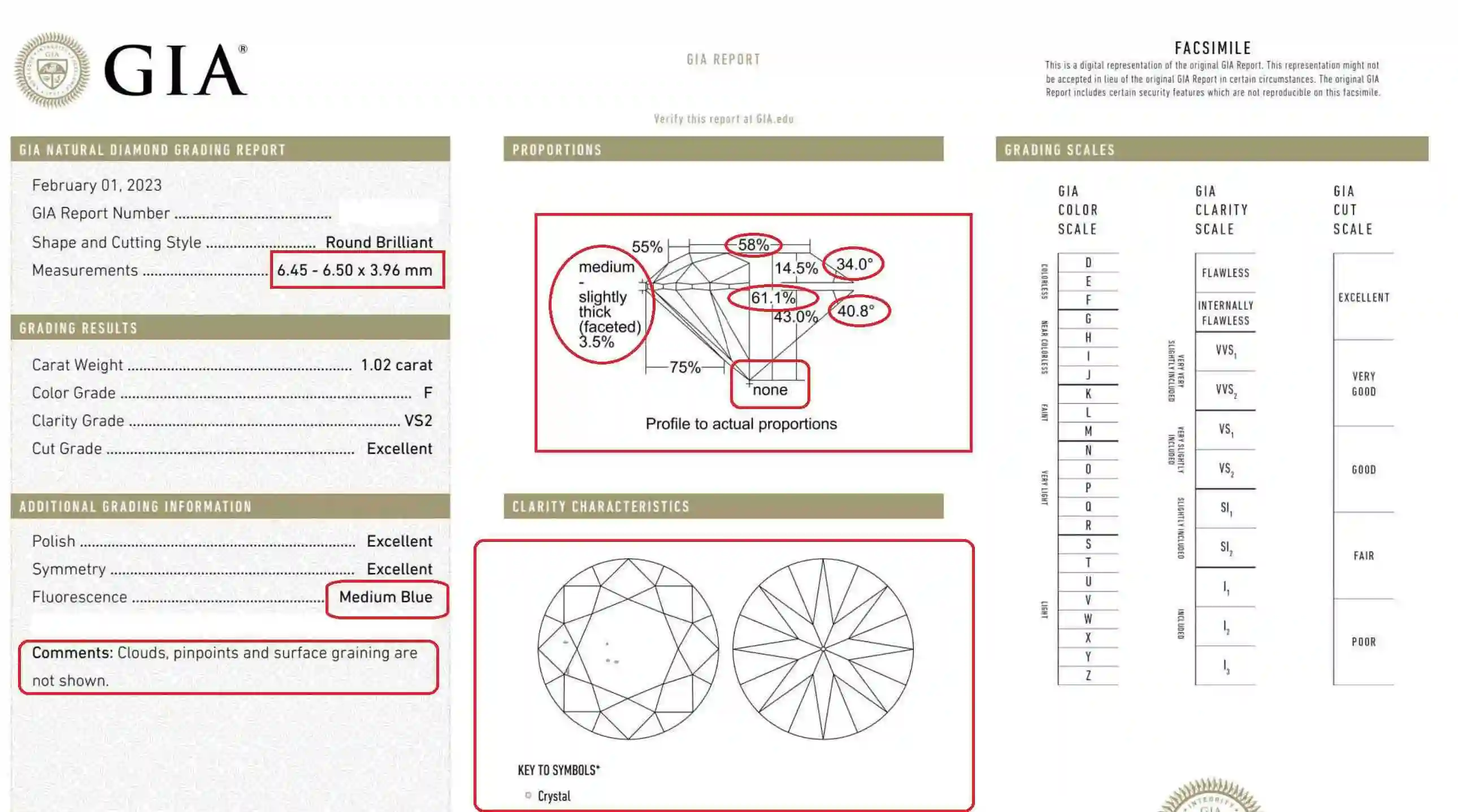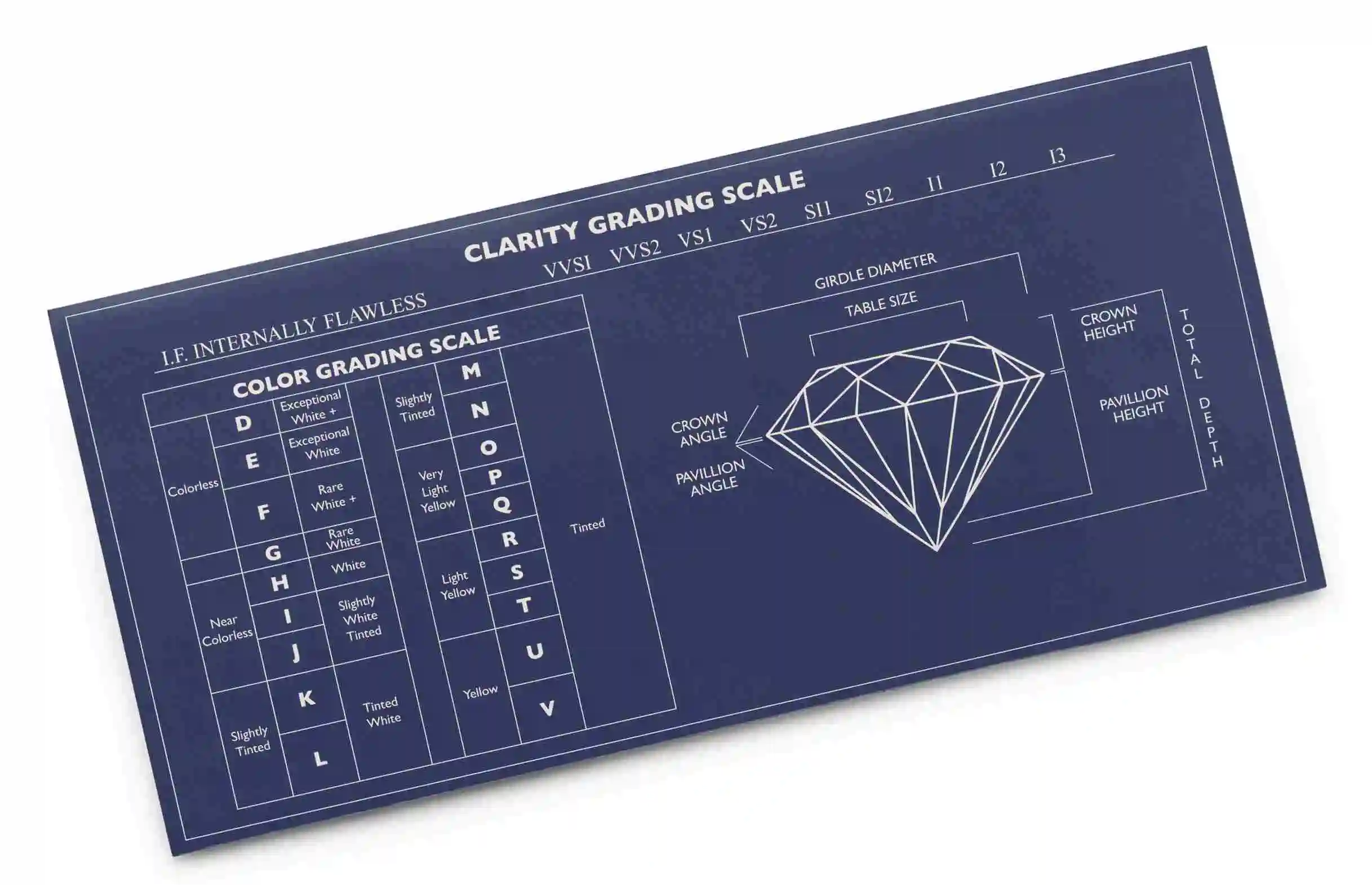Under this scenario, shoppers prioritize quality over size. Accordingly, they often buy "investment grade" GIA or AGS diamonds with flawless or VVS clarity and D or E color with excellent/ideal cut and no fluorescence, weighing at least 1 carat. The two factors that qualify diamonds in this range as investment-grade are rarity and scarcity. In our estimation, less than 1% of all naturally mined diamonds with ideal 4Cs and no fluorescence qualify as investment grade.
Below are two examples of investment-grade diamonds:
GIA 1.7 carat D VVS1 Super Ideal Cut. Follow link
AGS 1.5 Carat E VVS1 ideal cut. Follow link
What diamonds qualify under this range?
- Lowest carat weight: 1 carat
- Lowest color: E color
- Lowest clarity: VS1 clarity
- Lowest fluorescence range: None
- Qualifying grading labs: GIA, AGS, GCAL


